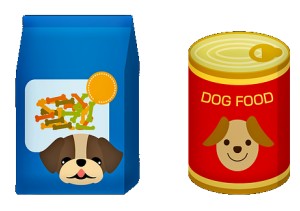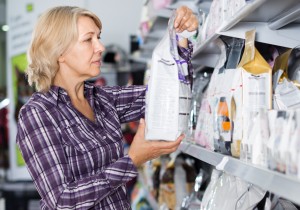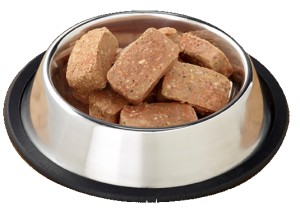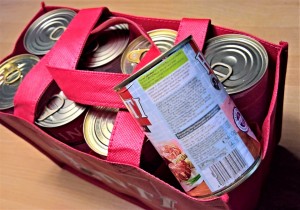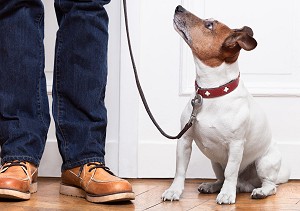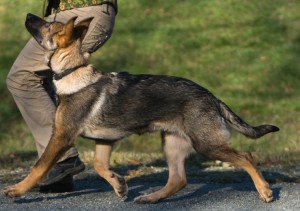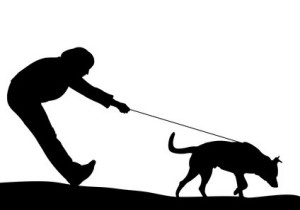What Every Puppy Owner Should Know About Feeding
By Michele Welton, Dog Trainer, Breed Selection Consultant, Author of 15 Dog Books
3 Best Ways To Feed Your Dog Healthy Food
→ What Every Puppy Owner Should Know About Feeding
A Quick Way to Make Homemade Dog Food
Pros and Cons of Raw vs Cooked
What Makes a Dog Food Good – or Awful
Truth and Lies on Dog Food Packages
5 Best Kibble and Canned Dog Foods
5 Reasons Not To Feed Your Dog Grains
Two Shocking Reasons Vets Recommend Kibble and Canned Dog Food
How To Tell If Your Dog Is Overweight – And What To Do About It
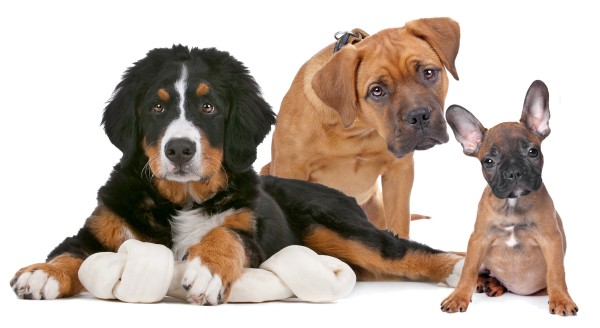
What to feed a puppy
The manufacturers of kibble and canned dog foods have been delighted to discover how lucrative it is for them to create separate foods labeled for Puppies.
Labeling a food as Puppy Food makes that product fly off the shelves – whether it's any good for puppies or not.
So... does your puppy need a food labeled Puppy Food?
My answer is "No." The right food works just fine for dogs of all sizes and ages.
The right food for all of my puppies is on this list.
Looking for kibble or canned food? I don't feed my puppies kibble or canned food on a daily basis. Here's why.
One question.... do you have a large-breed puppy?
A large-breed puppy is one who will weigh more than 70 pounds as an adult.
Large-breed pups are different from smaller-breed pups in that you need to be more careful with their rate of growth.
You want large breeds to grow slo-o-o-wly.
Why? Because these pups have so much bone that needs to grow, and so much weight that needs to be supported by that bone. Slow, steady growth is necessary. If a large-breed pup puts on weight too quickly and his skeleton is too immature to provide proper support, the result can be microscopic tearing of skeletal tissue and malformed bones and joints. That can lead to hip/elbow dysplasia or osteochondritis.
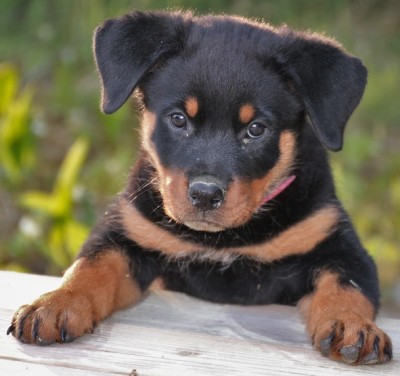
You can protect this Rottweiler puppy's bones and joints by not letting him run and jump too much, by not overfeeding, and by not supplementing with extra calcium.
Now, those ailments also have a strong genetic (inherited) component. But they can be triggered or worsened by lifestyle factors, such as:
- taking a puppy jogging or bicycling
- allowing a puppy to jump too much or too high (either up or down)
- allowing a puppy to scramble around on a slippery floor
- allowing a puppy to dash up or down stairs
- improper feeding
Don't make these two mistakes in feeding a large-breed puppy:
- Don't overfeed. Many large-breed puppies I see in my obedience classes are dangerously heavy for their age. Yes, a roly-poly 6 month old Lab looks adorable, and a muscular 13-month-old Rottweiler looks impressive, but you're setting them both up for serious health problems.
Large-breed pups should look rather tall, slim, and gangly for their first 18-24 months.
- Don't supplement with extra calcium. In the past, owners often supplemented with calcium tablets under the assumption that a large pup must need lots of calcium for healthy bones.
Well, he does need calcium for healthy bones, but not nearly as much as people thought! Too much calcium is just as bad as too little. My homemade recipe specifies the amount of calcium I use to balance the phosphorus in the meat. I add nothing more than that.
A commercial food suitable for a large-breed pup should contain 1.2 to 1.5% calcium. It should also contain less phosphorus than calcium. How much less? The calcium-to-phosphorus ratio should be from 1:1 (same amount of calcium as phosphorus) up to 1.4 to 1.
Are you wondering about protein? You might have read on some internet sites that too much protein is bad for large-breed puppies. That's a myth. All healthy canines, large and small, young and old, thrive on high protein. Ironically, it's LOW protein that causes so many health issues in dogs, not high protein.
Again, your focus with a large-breed pup should be not to give too much food, and not to give too much calcium.
Don't allow any dog (whether puppy or adult) to free-feed.
Free-feeding means leaving a bowl of kibble continuously available for a pup to nibble at whenever he wants.
Here are 5 reasons free-feeding is not a good idea for any puppy or adult dog:
- Free feeding makes your pup's digestive cycle unpredictable, which means you don't know when he will need to go to the bathroom.
- Your pup's appetite is a good barometer of his health, and it's easier to keep tabs on appetite when you're offering scheduled meals and watching him eat.
- Free feeding can create picky eaters who feel entitled to food rather than appreciative of being given food.
- If you have more than one dog, free feeding invites bullying and can create nasty food guarding issues.
- Finally, scheduled feeding is a prime opportunity to demonstrate that you are in charge of the food. You make the food appear, you require your pup to be calm and polite before you give it to him, you allow a certain amount of time for eating, then you pick up the bowl.
Scheduled, controlled feeding reinforces a subtle, psychologically-healthy leader-follower relationship. Whereas free feeding gives your pup the impression that food is just magically available.
HOW MUCH to feed puppies
Every pup is so different that all you can do is estimate the amount of food, and then monitor your pup's growth.
Start with this....
- What does your pup weigh now?
- What should he weigh, roughly, as an adult?
- Compare the two numbers.
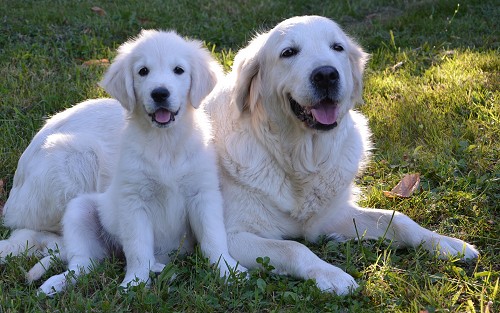
If the puppy is currently less than half his adult size...
...he should be eating between 6 and 10% of his current weight (total food per day).
For example, if your male pup weighs 20 lbs, and males of his breed typically mature at 60-70 lbs, your pup is less than half his adult weight.
Multiply his 20 lbs by 6% (equals 1.2 lbs of food per day) and also by 10% (2 lbs of food). Within that 1.2 to 2 lbs range, you'll need to experiment to find the right amount of daily food for your particular pup.
Large breed pups should eat at the lower end of their range, to slow down their growth. We've already talked about the importance of this.
Also generally, a pup whose weight is getting close to the halfway point needs less food, while a pup whose weight is still far away from the halfway point needs more.
But every pup is different in metabolism and activity level!
And remember, his current weight will keep changing, so you should monitor his weight on a weekly basis and adjust your food quantity as he grows.
Also.... that daily amount shouldn't be fed all at once. Divide it into three or four smaller meals. Most puppies over 8 weeks old should eat three meals per day until they're about 6 months old, then two meals per day thereafter. Toy breed puppies (because they can have problems regulating their blood sugar) should eat four meals per day until 4 months old, three meals per day until 6 months old, then two meals per day thereafter.
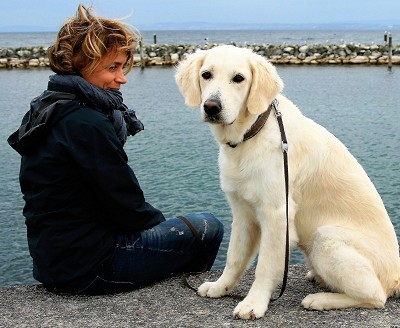 If your pup's current weight is MORE than half his adult size, but LESS than 80% of it...
If your pup's current weight is MORE than half his adult size, but LESS than 80% of it...
...he's getting closer to maturity, but still has a ways to go. He should probably be eating 5 or 6% of his current weight, per day. But remember to keep large breed pups on the slim side!
If his current weight is very close to his adult weight, say 90%...
...try dropping the percentage down to 4%.
And when he reaches his adult weight...
...you just need to maintain it now, using this ADULT chart, which drops the percentage to 2-3%.
See how it works?
Important! These feeding guidelines are only a starting point. Every dog is different. You MUST monitor your pup's shape and energy to make sure he's getting enough food, but not too much food.
How to introduce new food
There have been times when I've taken in a foster pup with no knowledge of his previous diet. All I can do is serve him the same basic food as my other dogs.
But if possible, it's best to gradually phase in a new diet, especially with puppies who are brand new to your home.
When you bring your puppy home, keep feeding what the pup is used to – yes, even if it's the cheapest supermarket kibble on earth. It won't hurt him to eat it for a little longer.
Give him a couple of days to settle into your home while he eats his familiar food. Sometimes the shock of a new environment can cause digestive upsets, so you don't want to make things doubly worse by adding a new food.
Once he has settled in, begin substituting a very small amount (maybe 10%) of the new food for the old food. Do this over a week or two, until he is completely switched over to the new food.
"Help! My puppy won't eat the new food!"
Yes, this sometimes happens, especially with older pups. Some pups are stuck in a rut of processed foods – almost addicted to them, like kids who refuse to eat anything without sugar in it.
If you've introduced the new food slowly, mixing it with his familiar kibble or canned, yet your pup refuses to touch it, you need to take a firmer stance.
- Put the dish of food on the floor, or in his crate with him.
- If he doesn't eat within 10 minutes, pick it up and put it in the fridge.
- When it's time for his next meal (he should be eating 2-4 meals a day, depending on his age), take it out of the fridge. Let it sit for a few minutes until it's room temperature (or warm it up a bit by floating the bowl in hot water), stir it up, and put it down again.
- If he still doesn't eat it, throw it out. Prepare the exact same food for his next meal.
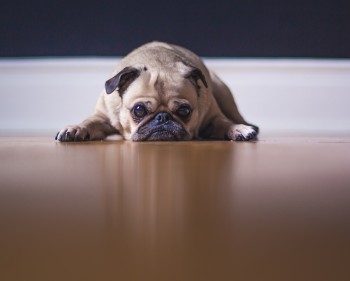
Seriously, that's how you do it.
When he's hungry enough and realizes that you're not going to offer anything different, he'll eventually eat it. Praise him vociferously and he'll develop a real taste for it!
In The Nature of Animal Healing, Dr. Martin Goldstein DVM reassures us:
"My own strong belief is that unless a pet is quite old or suffering from a degenerative disease like cancer, fasting is a natural way for him to clean out his system, regain his health, and marshal new energy – along with an appetite. The time he goes without food doesn't do him harm." (Goldstein, pg 65)
Just make sure your pup is drinking during this time.
If he's a toy breed, keep his blood sugar up! Buy a tube of a supplement called Nutrical from the pet store. Dab a tiny fingerful of it on the roof of his mouth several times a day to make sure he has enough calories while he's on his stubborn hunger strike. A bit of raw honey can help with this, too.
As with all things related to your dog, use common sense. Make sure the food you're offering isn't spoiled; some smart pups won't eat something that's contaminated. And if your pup acts truly ill, a vet visit is in order.
MORE ABOUT FEEDING
HONEST ADVICE ABOUT TRAINING
My best-selling books – now available FREE on my website
 Respect Training For Puppies: 30 seconds to a calm, polite, well-behaved puppy is for puppies 2 to 18 months old. Your puppy will learn the 21 skills that all family dogs need to know. Click here to read for free.
Respect Training For Puppies: 30 seconds to a calm, polite, well-behaved puppy is for puppies 2 to 18 months old. Your puppy will learn the 21 skills that all family dogs need to know. Click here to read for free. Teach Your Dog 100 English Words is a unique Vocabulary and Respect Training Program that will teach your adult dog to listen to you and do what you say. Click here to read for free.
Teach Your Dog 100 English Words is a unique Vocabulary and Respect Training Program that will teach your adult dog to listen to you and do what you say. Click here to read for free. 11 Things You Must Do Right To Keep Your Dog Healthy and Happy helps your dog live a longer, healthier life. Get my honest advice about all 11 Things before you bring home your new puppy, because some mistakes with early health care cannot be undone. Click here to read for free.
11 Things You Must Do Right To Keep Your Dog Healthy and Happy helps your dog live a longer, healthier life. Get my honest advice about all 11 Things before you bring home your new puppy, because some mistakes with early health care cannot be undone. Click here to read for free.

